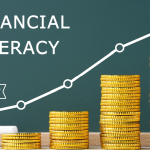Key takeaways
- Cash rebates and 0% financing are both common promotions that auto dealers will run to entice buyers to purchase a vehicle.
- Both options have pros and cons, but one may be better suited for your specific financial needs and purchase.
- A cash rebate may help buyers who are strapped for cash while a 0% APR can help to keep monthly payments lower. If both options are presented to you, be sure to run the numbers before choosing one over the other.
Both a cash rebate and 0% financing can help you save money on a car purchase. A cash rebate is money given back to the car buyer in exchange for purchasing a vehicle, while 0% APR is no interest or fees for an auto loan.
Unfortunately, most auto manufacturers don’t allow buyers to combine both deals, so you will have to make a decision. When choosing between 0% financing and a rebate, consider which would benefit your finances the most.
What is a rebate on a car?
A car rebate is a post-purchase price adjustment, usually of between a few hundred and a few thousand dollars. This incentive is typically only offered by a vehicle’s manufacturer if you purchase it directly from a branded dealership.
Rebates essentially lower the price of your vehicle, though the “cash back” typically takes some time to process. The amount of the rebate may then be considered as part of your down payment or applied directly toward the amount you need to finance your purchase.
Pros and cons of a cash rebate
Cash rebates also come with benefits and drawbacks. Some of the benefits include:
Pros
- Can be used for down payment. Cash rebates can be put toward your down payment, lowering the total amount of the auto loan. And if you can apply it before tax, you’ll save even more money.
- May offer more savings than a 0% deal. In some cases, you might be able to save more money with a cash-back deal versus a 0% auto loan option. A large cash rebate may completely offset the amount of interest you pay over the life of a loan.
- Acts as money in your pocket. If you have your down payment and taxes covered, a cash rebate can simply be mailed to you as a check. It doesn’t have to go toward vehicle costs, so you can technically use it for any expense.
Cons
- Limited selection. Like with 0% financing, cash rebates are only offered on a limited selection of new vehicles. You may find that the manufacturer of the car you want doesn’t offer cash back.
- Higher price. Similar to the 0% option, manufacturers usually offer cash back deals only on new vehicles. The price of a new vehicle may not fit your car budget, even with an incentive in the mix.
- Other fees possible. Your auto loan may charge origination fees and prepayment penalties on top of the sales fees you pay when buying a car, which could reduce the overall savings of a rebate.
What is 0% financing?
0% financing allows you to borrow a vehicle loan without paying interest because you are not being charged an annual percentage rate (APR). This is a common incentive among dealers to drive the sales of a specific make, model, year, or trim level. While there are some upfront costs you will want to be aware of, a no-interest loan can save you thousands of dollars over the course of paying off your car. However, their availability is quite limited, and even those with excellent credit may not qualify for a 0% APR.
Pros and cons of a 0% APR
Interest-free financing deals have several pros, including:
Pros
- Lower monthly payments. Since you won’t be responsible for paying interest, depending on the length of the loan, your monthly payment could be lower than it would be with the cash rebate option.
- Quicker repayment. You could repay the loan sooner by paying more than the minimum monthly payment since your payment amount goes toward the principal only and not interest.
- Less paid toward fees. There will still be dealership or manufacturer fees for buying the car — but you will not have to worry about paying fees to a lender. This is another way 0% APR keeps costs low.
Cons
- Only available for select vehicles. Zero percent deals are typically only offered on a limited number of vehicles, so the car you want may not come with this special financing deal.
- Can be more expensive. Since 0% deals are only offered for new cars, you would most likely pay more for the new car than you would for a used car financed at a higher APR.
- Still need a down payment. Even a loan without interest can still be costly if you borrow too much. Make sure you have a large down payment to offset the higher purchase price of a new car.
How to choose between 0% financing and a rebate
The best option will depend on your finances and budget goals. However, keep in mind that qualifying for a 0% financing offer is more difficult than getting a cash rebate.
1. Determine if you qualify for 0% financing
Qualifying for 0% financing depends on several factors, including the type of car you’re looking to buy, as well as your credit score, debt-to-income ratio and income.
If the manufacturer or dealer offers this incentive, you need to be a well-qualified borrower. This typically means excellent credit — you are more likely to qualify if your score is above 780. Check your credit score before applying to see if you meet minimum requirements.
Without excellent credit, you may not be eligible for 0% APR. And in fact, many manufacturers are now offering low interest rate deals rather than 0% deals — interest rates of two to three percent are common. In cases like these, finding a lender that offers a similar rate and opting for the rebate is your best option.
2. Find out how much the rebate covers
Rebates are typically provided by the car manufacturer, not the dealer, and in most cases, the money is applied as the down payment for the car. But if you have plenty of cash to pay the down payment on your own, the rebate can be sent to you in the form of a check instead.
Before deciding, find out exactly how the rebate will be applied to your purchase. In some states, the money may actually be deducted from the vehicle’s purchase price before taxes are calculated. This gives the rebate an added benefit of reducing the taxes you pay on the purchase. The key is to find out in advance exactly what the rebate covers.
You can find rebate — and 0% APR — deals on manufacturer websites and trusted sources like Edmunds and J.D. Power.
Bankrate tip
Contact the manufacturer of the vehicle you are looking to purchase or browse Edmunds and J.D. Power. You can sort your search results by manufacturer or vehicle type to find the best rebate or financing deal. In many cases, you may be able to save up to $2,000 off the cost of some SUVs, up to $500 on many trucks, and between $500 to $1,000 on sedans.
3. Calculate the cost of both options
To compare the payment options for both the 0% APR and the cashback option, use a car payment comparison calculator. For the 0% option, the total amount of the loan would be the price of the car since no interest is charged. To calculate the cash back option, subtract the cash back amount from the total loan amount.
As an example, a manufacturer may offer either 0% financing or a rebate of $1,000 on a car worth $35,000. If you qualify for a 4.77 percent interest rate on a loan term of 48 months, the 0% financing will save you money.
| Monthly payment | Total interest paid | |
|---|---|---|
| Monthly Payment | Total Interest Paid | |
| Cash rebate | $779 | $3,414 |
| 0% financing | $729 | $0 |
However, the same vehicle with a $4,000 cash rebate will net you money under the same conditions. Because the rebate is worth more than the total interest you will pay, a 0% APR offer is the less cost-effective option.
Since there are so many moving parts to an auto loan — sales tax, trade-in and down payment being a few big components — the savings will vary widely. Your interest rate will also hinge on a few factors, like how much money you’re putting down, your debt-to-income (DTI) ratio and your credit score. Take into account everything you will pay upfront and over the course of the loan to find the right choice.
Keep in mind that some 0% APR deals are promotional financing, and after an initial period of 12 or 24 months, in some cases, your rate may rise drastically.
Account for your rebate
When determining how much you will spend, know that a rebate is applied after you negotiate the final sale price. If you plan to finance $35,000 and have a $1,000 rebate, you should do the math for a $34,000 loan.
Bottom line
When you feel ready to make a decision, consider the auto loan rate costs versus savings carefully. Zero percent APR will mean you don’t pay anything in interest, but you could offset interest paid with a high-value rebate. Even if you qualify for a dealer’s low APR or cash rebate option, applying for loan preapproval can help you compare deals and get the best option for you.
While both cash rebates and 0% APRs are appealing offers to prospective new car owners, it all comes down to what you’re looking for. Commit to researching the available deals and reading the fine print to compare them carefully. Don’t lose sight of your other criteria when making a selection — create a checklist to shop by and remember what factors are important to you.
Read the full article here
















